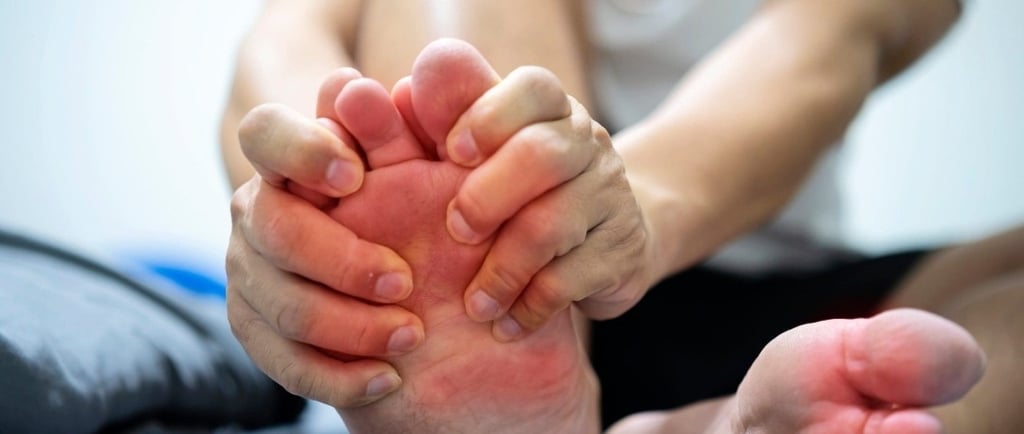Acute joint painful swelling (GOUT)
GOUTMEDICALPRIMARY HEALTH CARE
6/13/20233 min read


A painful variety of arthritis is GOUT. Sharp crystals can develop in your joints, most commonly in your big toe, when your body has an excess of uric acid. Gout attacks are periodic flare-ups of symptoms like pain and edema. Treatment often consists of symptom management along with food modification.
Causes of GOUT
GOUT is mostly brought on by hyperuricemia, or an excess of uric acid in the blood. When purines are broken down by the body, uric acid is produced. These are substances that are abundantly present in a number of meals and beverages, including alcohol, turkey and goose, liver, and shellfish. People who are seeking to reduce their intake of purines may want to choose duck or chicken instead, and they should completely avoid organ meats.
Normally, uric acid dissolves in the blood and is eliminated through the kidneys in the form of urine. It can pile up and form needle-like crystals if the body produces too much uric acid or does not eliminate enough of it. These cause the tissues around the joints to swell and hurt.
Symptoms of GOUT
Gout episodes almost always start suddenly and happen frequently at night. They include:
Severe joint discomfort. Gout commonly affects the big toe, though it can affect any joint. soreness that lasts a long time. After the most extreme pain has subsided, some joint soreness may linger for a few days to a few weeks. Later episodes are probably longer and more likely to affect many joints.
Both erythema and edema. Swelling, pain, warmth, and redness occur in affected joints.
A very limited range of motion. When you have GOUT, you might not be able to move your joints normally.
Risk Factors of Gout
Anyone can develop GOUT. Three times as likely to get gout are those who were assigned male at birth (AMAB). GOUT typically doesn't strike people who were born with the gender ascribed to them (AFAB) until after menopause. GOUT is more common in people with a number of medical disorders, including:
Weight gain or obesity.
Enlarged heart disease.
Diabetes.
(High blood pressure) Hypertension.
Kidney illness.
The blood cancer.
Diagnosis of Gout
A few imaging procedures may be used by our healthcare professional to capture images of your damaged joints. These tests might also reveal whether the GOUT has altered your joints in any way. You could require
X-rays.
Ultrasound.
(MRI) Magnetic resonance imaging.
A dual-energy CT scan, or a CT (computed tomography) scan.
Other typical examinations to identify gout include:
Uric acid levels in the blood can be determined via blood testing.
Joint aspiration involves taking a sample of fluid from inside a joint using a needle.
Treatment for GOUT
GOUT medications can be divided into two categories that each focus on a different problem. The first kind helps to lessen the discomfort and edema that are brought on by gout attacks. To avoid gout complications, the second kind lowers the level of uric acid in your blood. Which type of medication is best for you will depend on the frequency and severity of your symptoms.
Treatment for GOUT Attacks
Medications used to treat GOUT flare-ups and stop new attacks include:
NSAIDs, or non-steroidal anti-inflammatory medications: NSAIDs include over-the-counter medications like ibuprofen (Advil, Motrin IB, and other brands) and naproxen sodium (Aleve), as well as stronger prescription NSAIDs such as celecoxib (Celebrex) or indomethacin (Indocin, Tivorbex). NSAIDs include hazards, including stomach pain.
Colchicine: Your doctor can advise colchicine (Colcrys, Gloperba, Mitigare), an anti-inflammatory drug that greatly lowers GOUT symptoms. The medication's side effects, such as nausea, vomiting, and diarrhea, may exceed its advantages.
Corticosteroids: Prednisone and other corticosteroid medications may lessen the GOUT-related pain and inflammation. Corticosteroids can be taken orally or administered intravenously to a joint. Blood pressure and blood sugar elevations, as well as mood swings, are side effects of corticosteroids.
